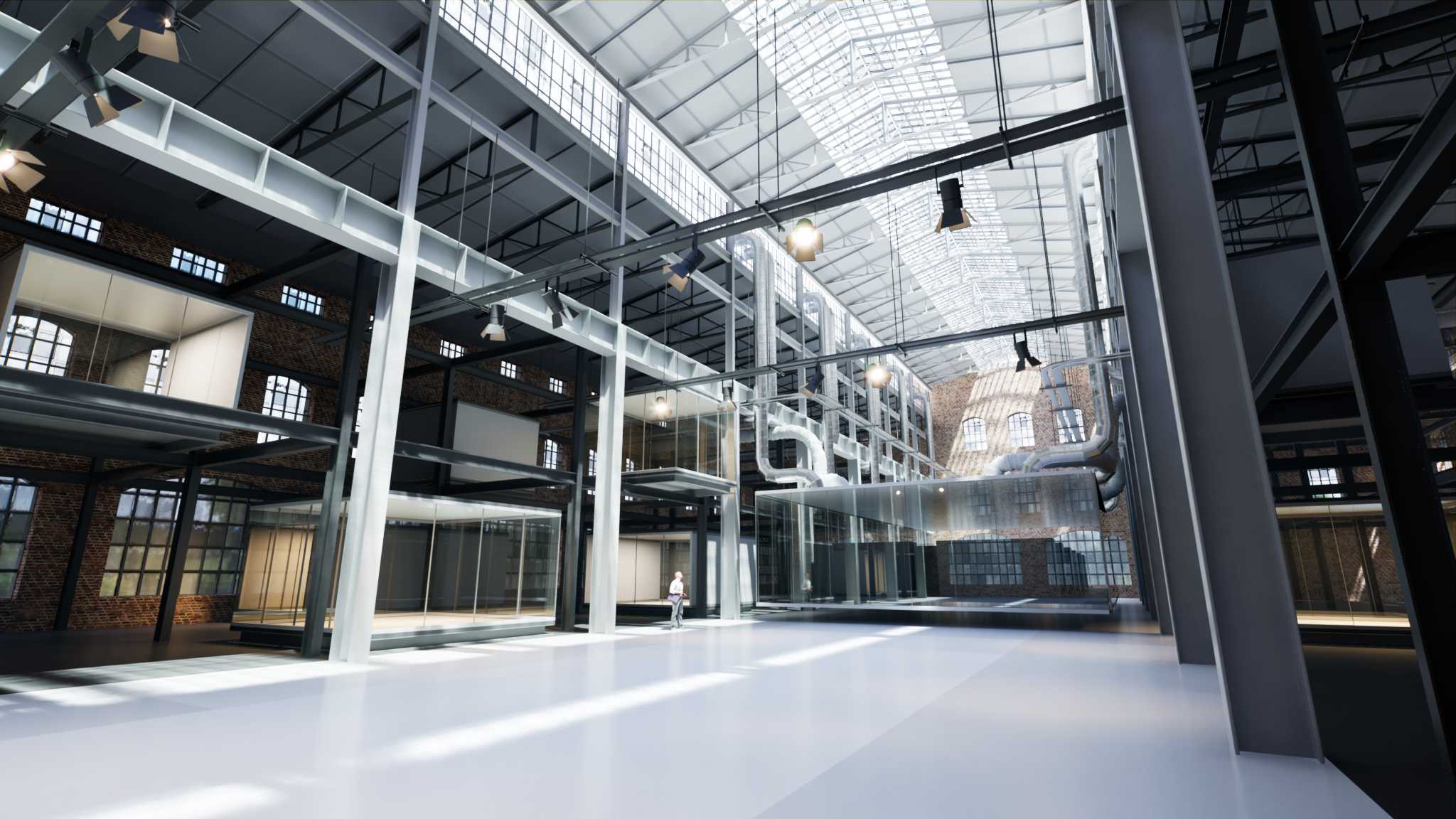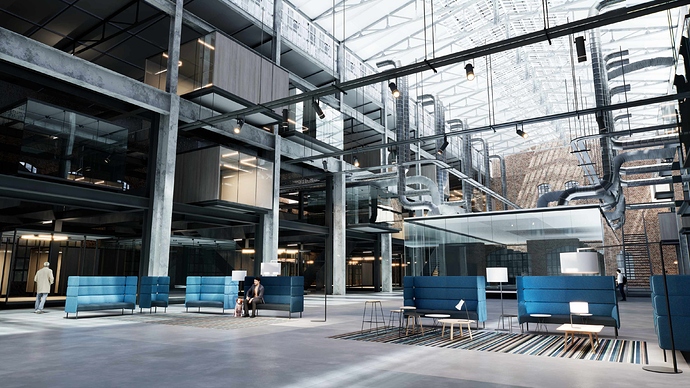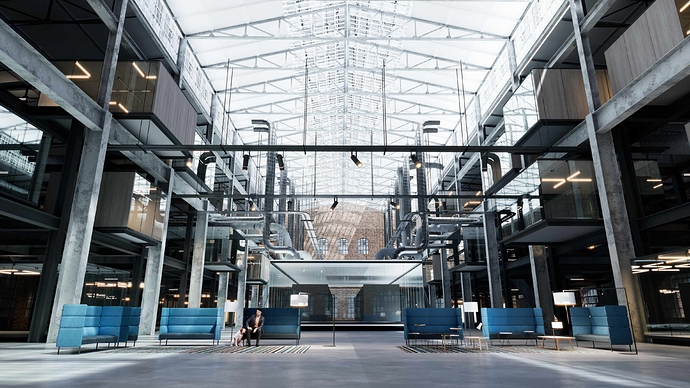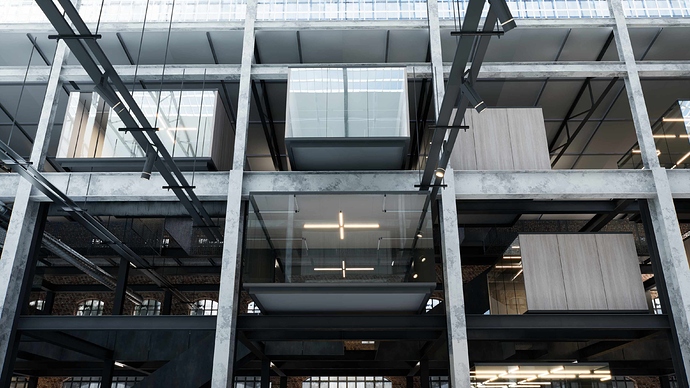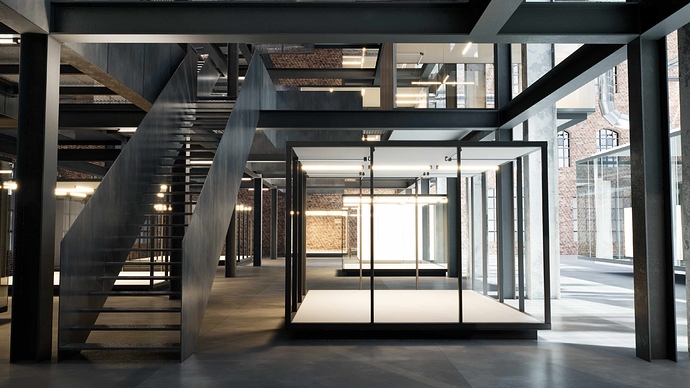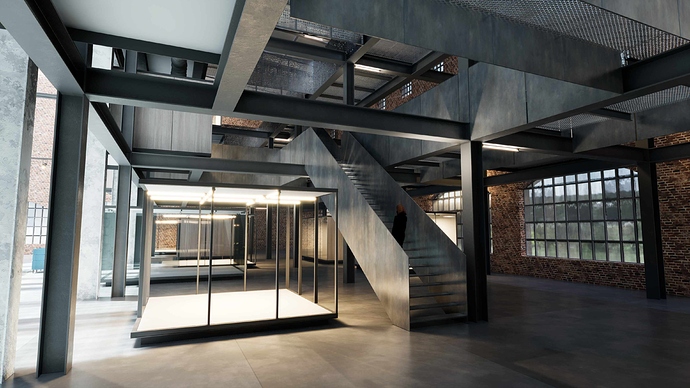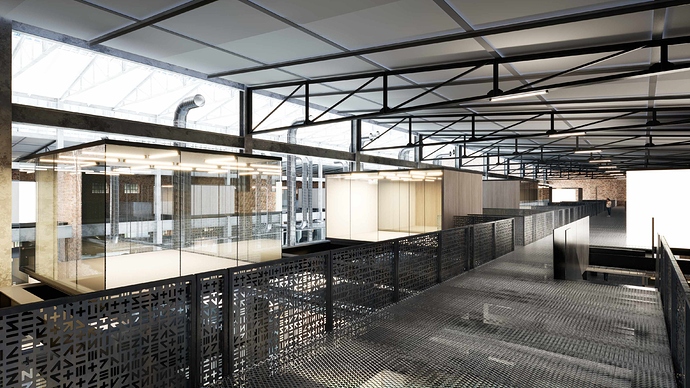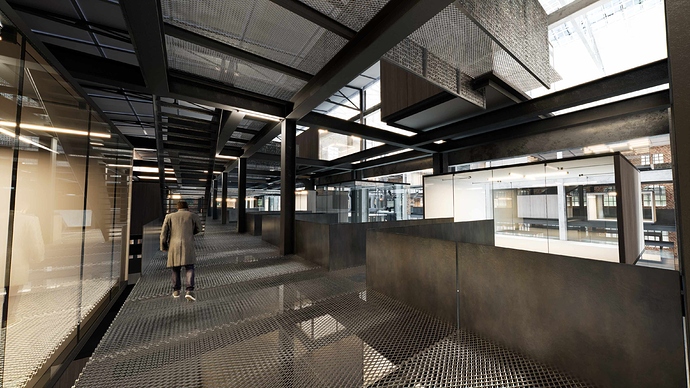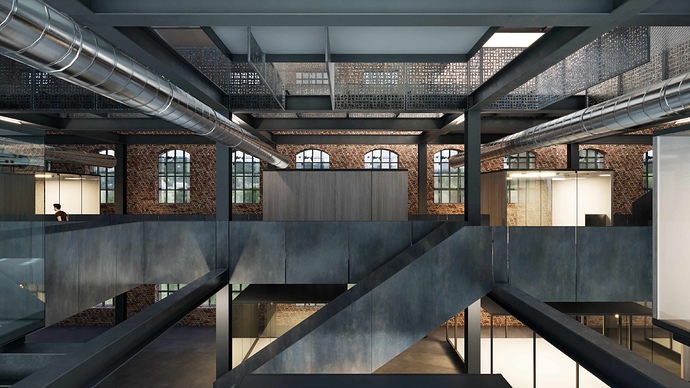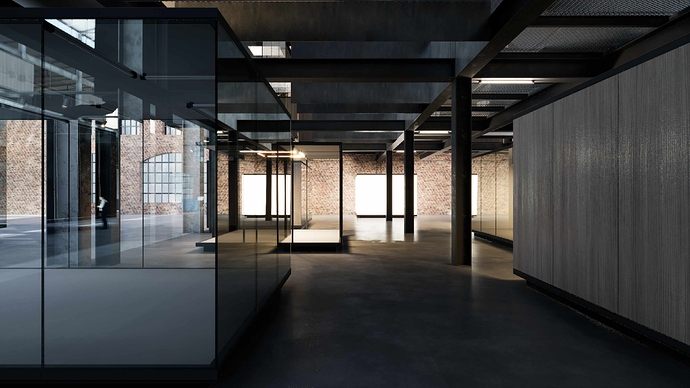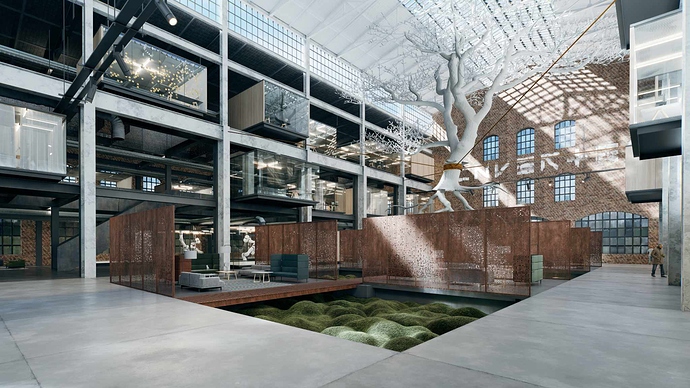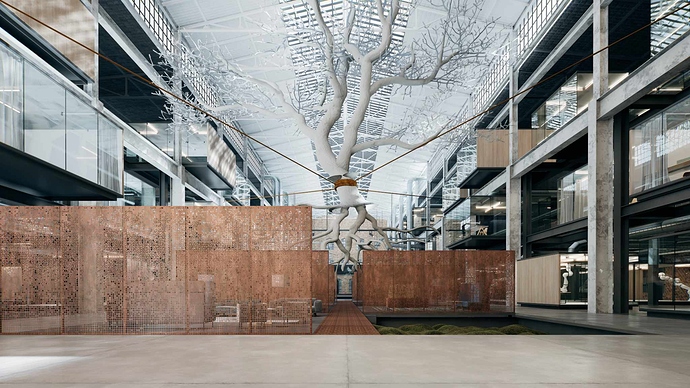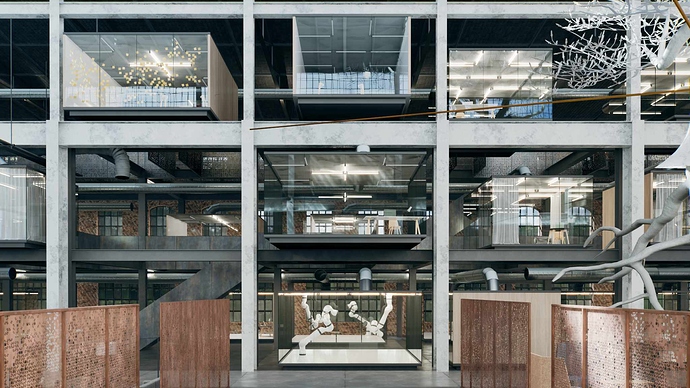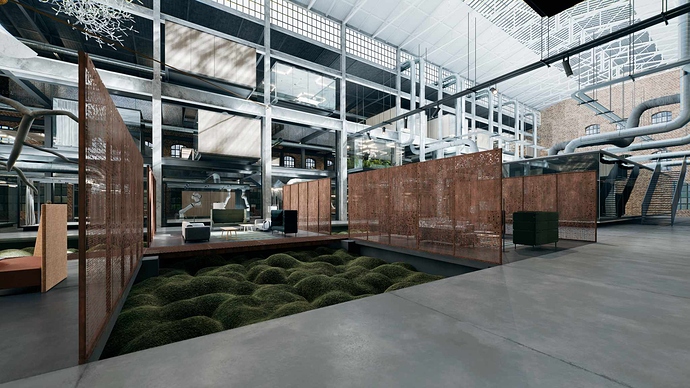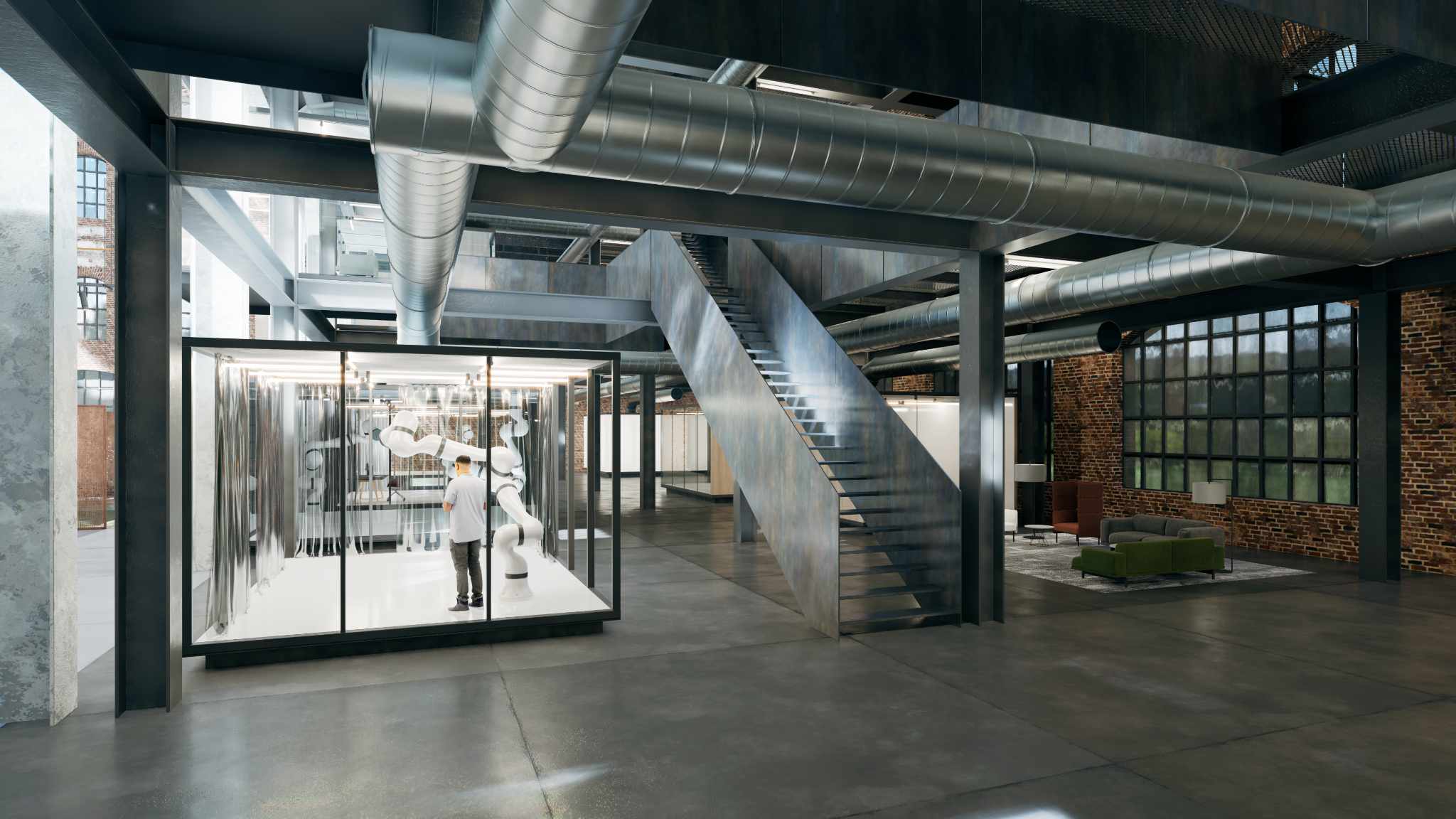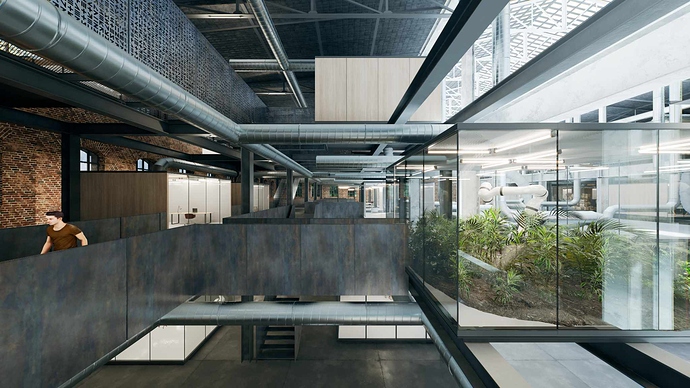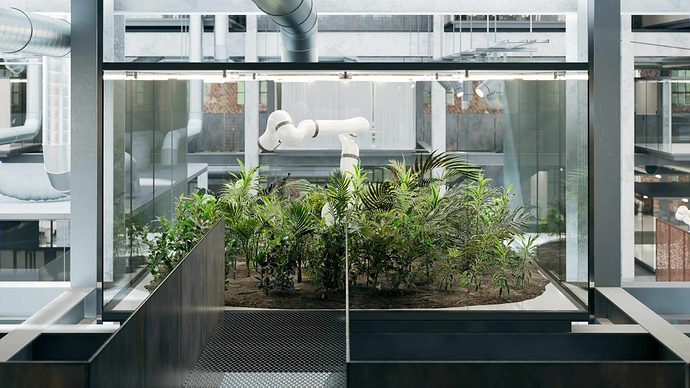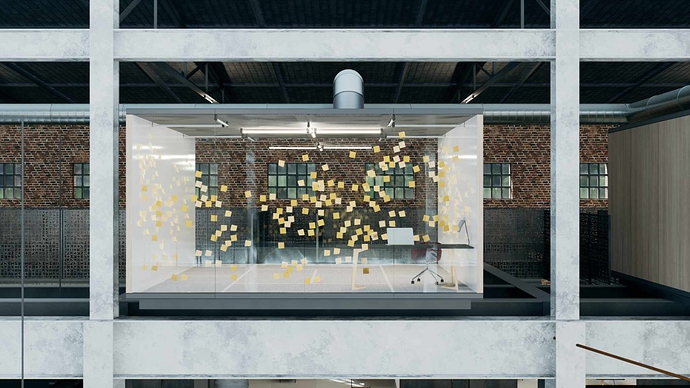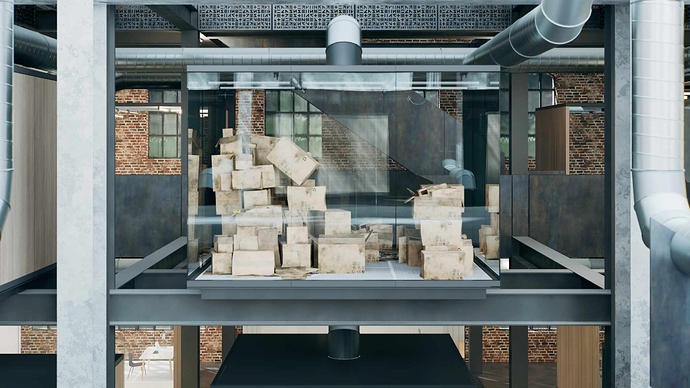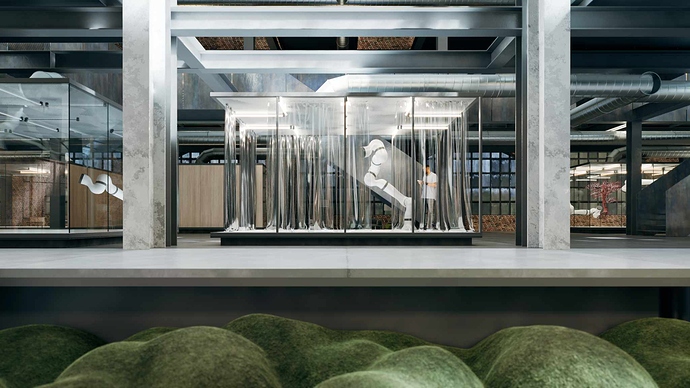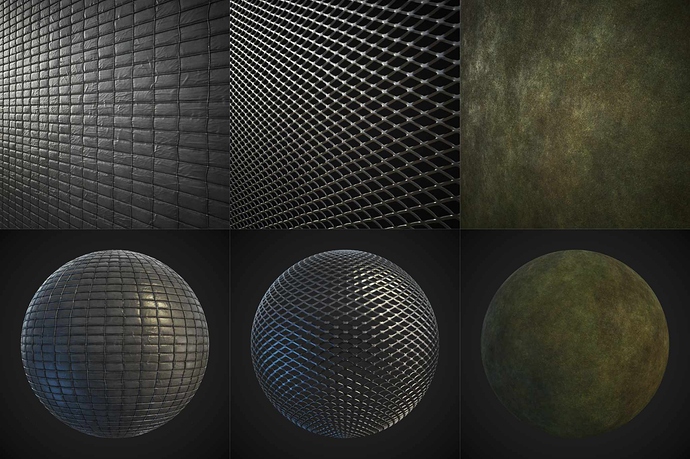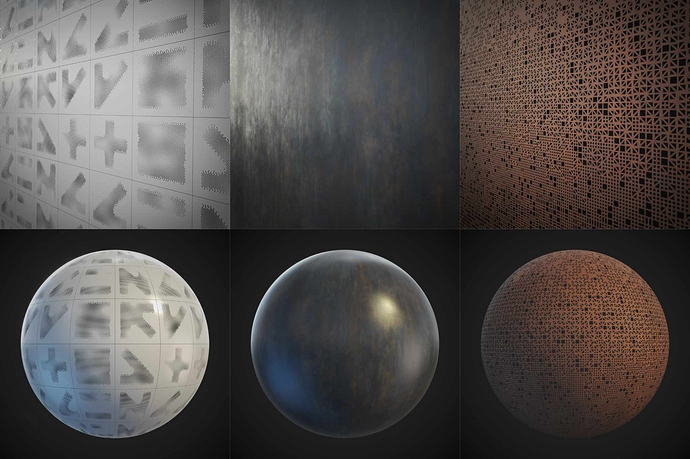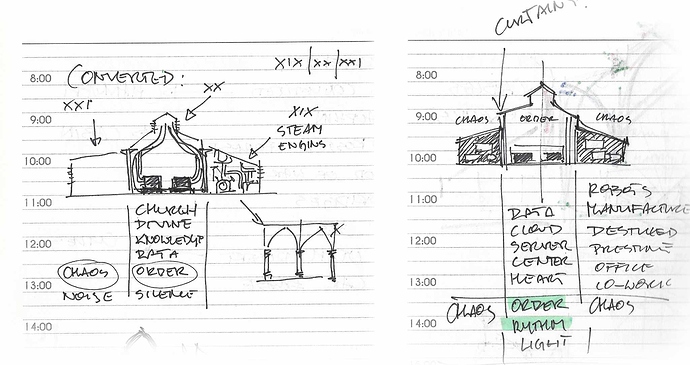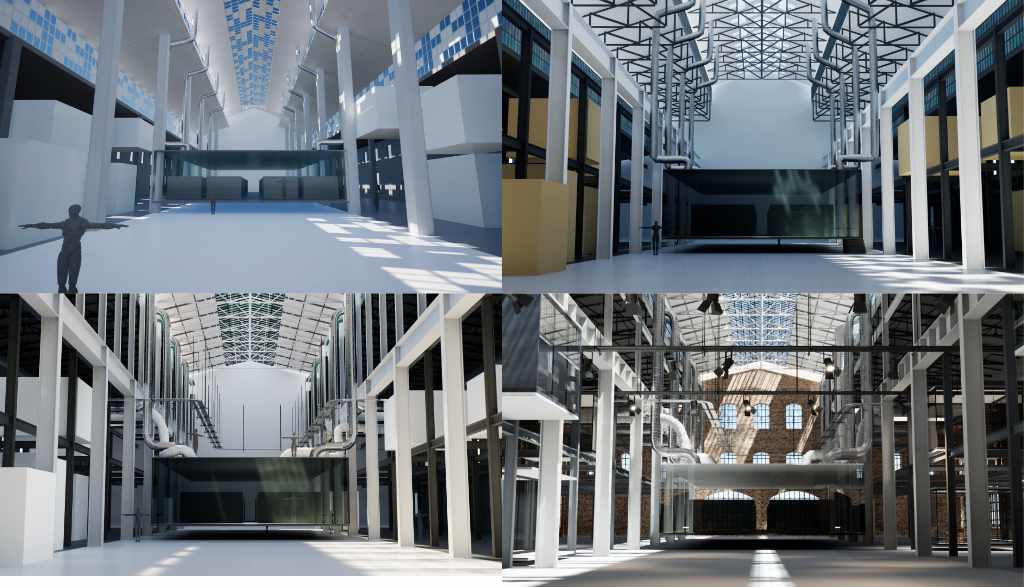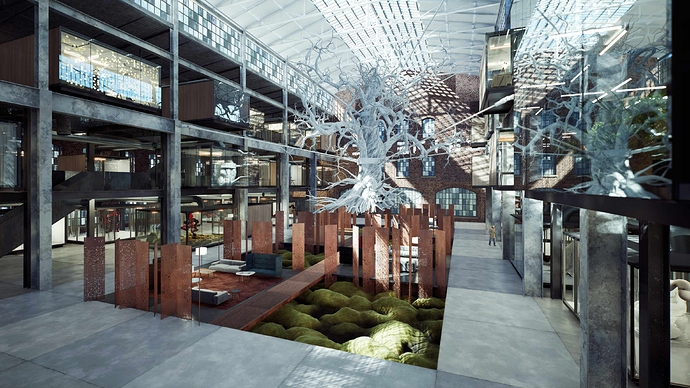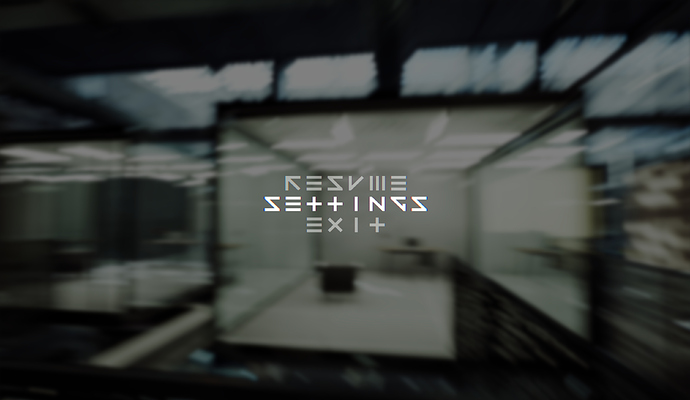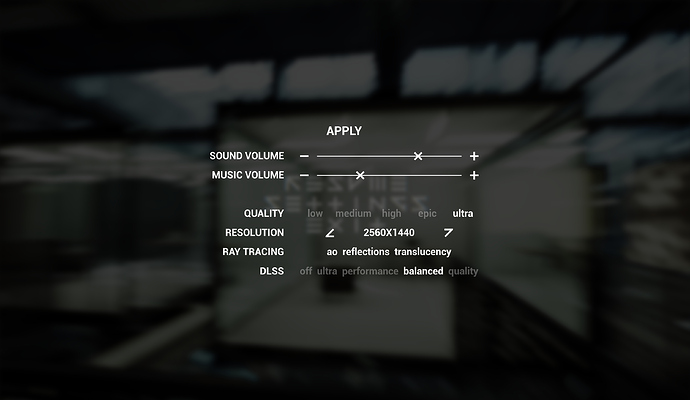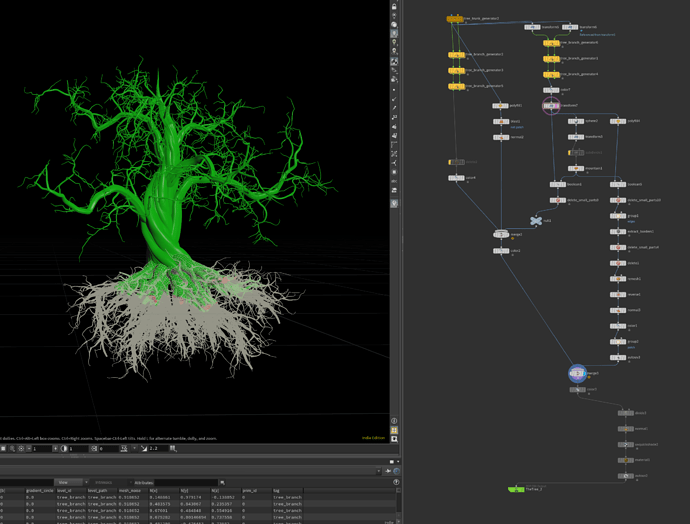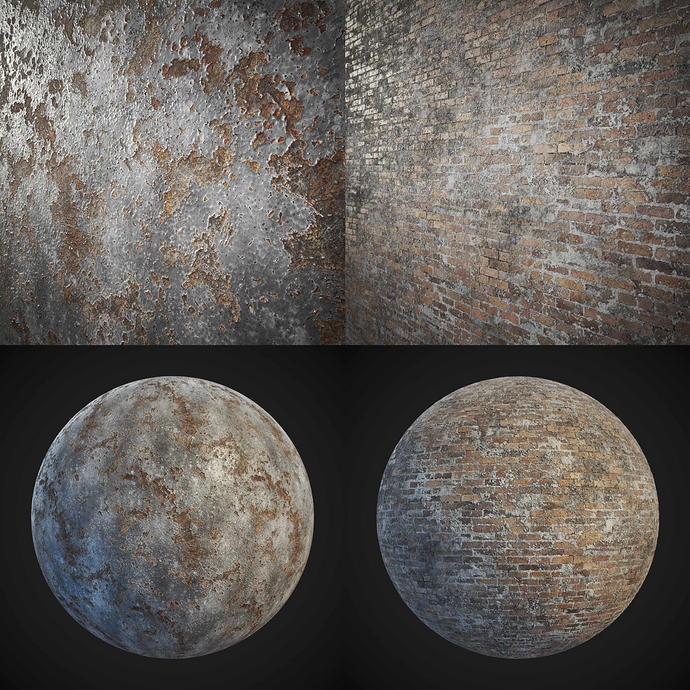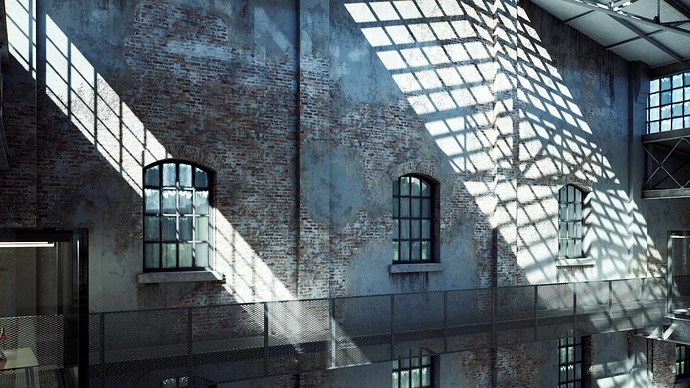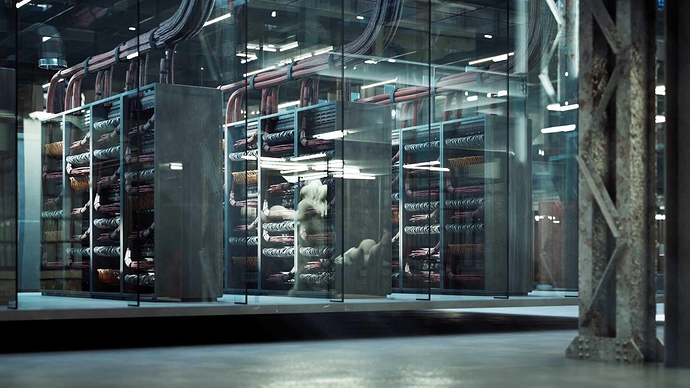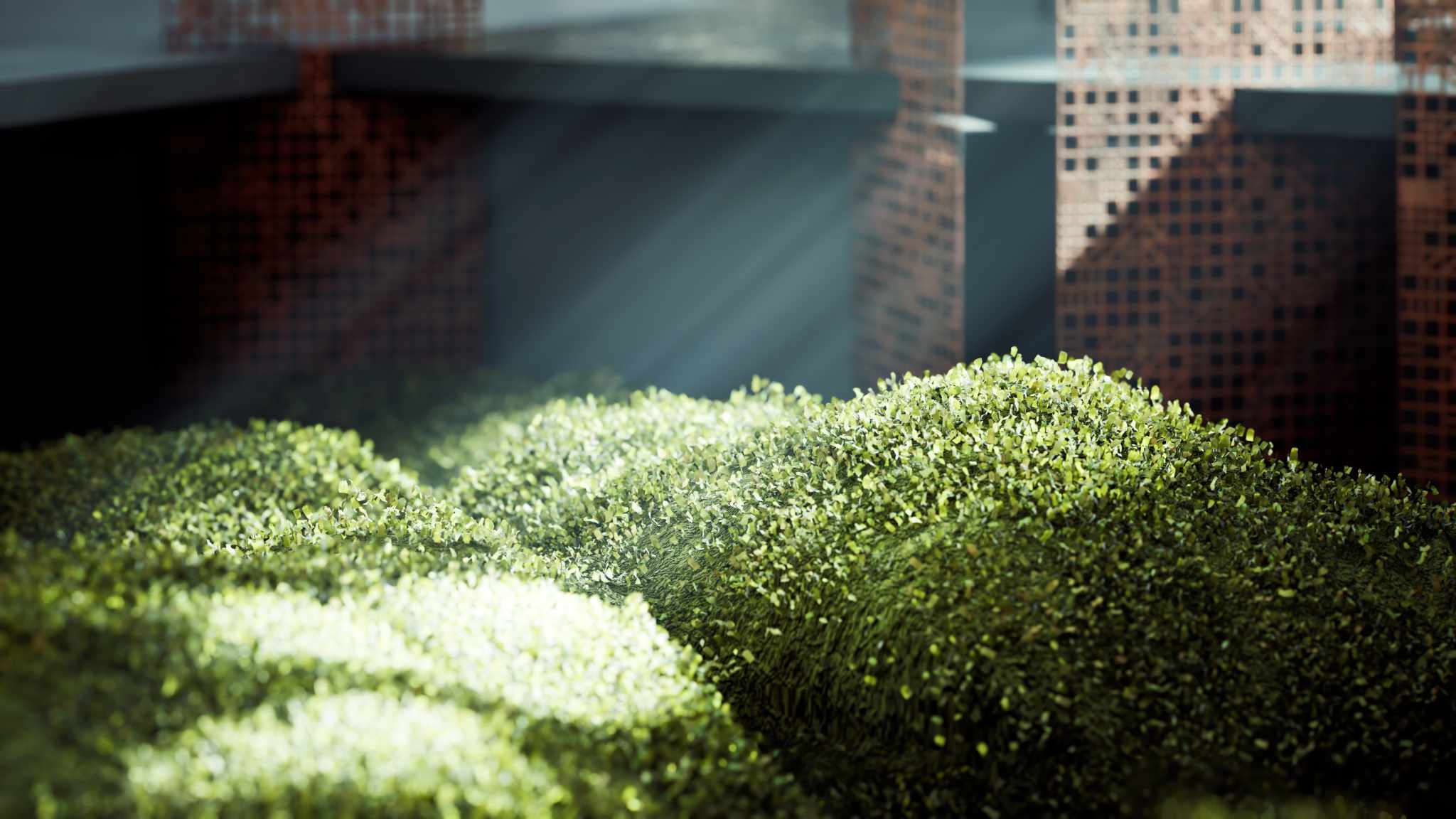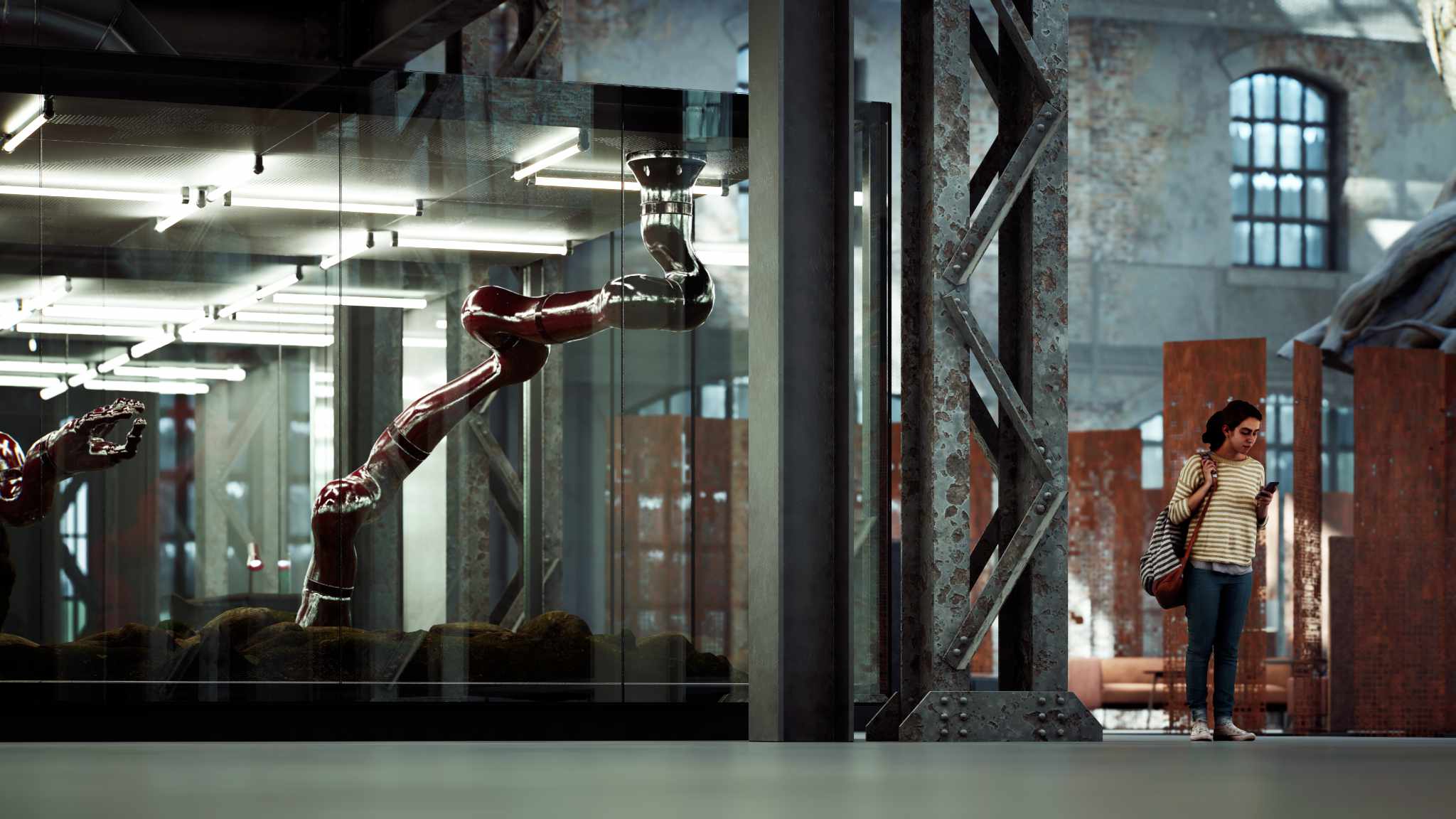Hi @erfan3p, @Flowstorm! Thanks for joining the chat 
Who’s ahead or behind is a bit relative, isn’t it? I suppose it all depends on the end goal. I think mine is still rather far away. Up till now I’ve been throwing in volumes, objects, simple shaders and testing if it works or not. I find it very easy to validate ideas quickly in UE. Also, instead of locking down specific stages of the process (like modelling first, then lighting, then texturing etc.) I try to do a bit of everything at the same time and keep refining various elements depending on the need along the way.
Here’s where I’ve got so far:
And some Substance Designer goodness, rendered inside SD:
@Flowstorm, this is a completely imaginary space. I hope that’s not against the rules, is it @ronen ? 
Like I mentioned before, I am focusing more on the idea itself of converting physical spaces around us (including the big blue dot). Why do we do that and what processes stand behind it? How did we deal with it in the past and what could it be like in the future? There’s been a lot of buzz lately about the fourth industrial revolution and that idea has been stuck in my mind for some time now. That explains why I chose an old factory as a hub for a new form of industrialized creativity, which has gotten democratized largely during past 5 or 10 years. While I was developing this site throughout last week I started drifting away slightly from my initial idea and thus I felt like I should go back a little and explain it a bit better. I realized I haven’t done justice to the “concept” part of the entry  .
.
At the start, I was trying to converge two, maybe three main ideas; industry, craft (or art) and power, most likely in the metaphysical sense (aka who’s in power now?). When overlaid those tropes on top of each other I ended up with a theme of a futuristic art-lab, a workshop of some sort in a 20th or 19th century factory that is sustained by modern tech and designed for contemporary artists. I started distilling specific ideas to narrow down the scope of the project, to find the right feeling, also key words, to get the focus right. I made a few simple sketches that turned out to be enough to start modelling in UE basic blocks:
While browsing through references and examples, I started thinking about this factory hall as an abandoned temple or a church, sanctuary. Quite a few of those 19th century factories expressed neo-gothic or neo-classical qualities and details. Often times the light behaved also in a particular way, with vast dusty volumes and god-rays introducing more eerie or majestic looks. So it all started to rhyme, especially with the unknown meaning of the art itself. Sometimes dubious, sometimes maybe even divine. But most of the time ambiguous.
And so I dove in and started pushing and pulling vertices and flipping normals, hoping for a low polycounts and manageable framerates. In the meantime, the pursuit for the neo-gothic vibes turned out to be completely futile, it didn’t work at all from the very start. I, therefore, focused on the main idea of the collaborative workshop but the theme of a force prevailed and got substituted by good ol’ nature, juxtaposed with a data processing unit that fuels contemporary and future tools. That’s how I found a proper “filler” for this vast empty space in the middle of the hall. I guess a lounge of that kind doesn’t sound too odd in a co-working area. Although, I am not happy with the design choices, that will most likely change soon.
But that dead tree will stay. I mean hang.

